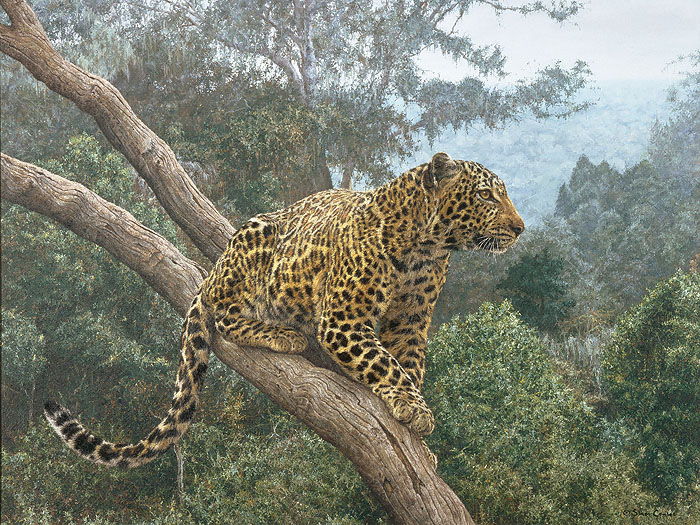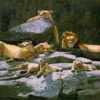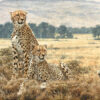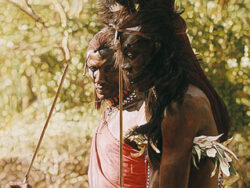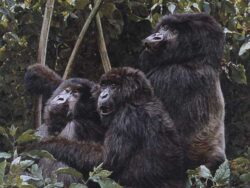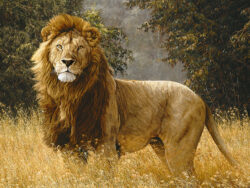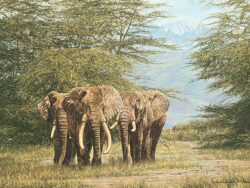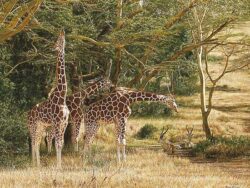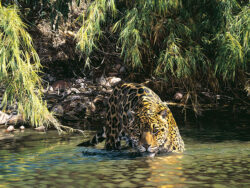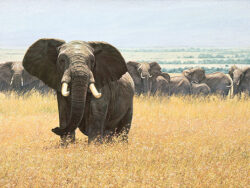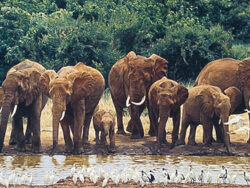The Solitary Hunter
$595.00
ANNIVERSARY EDITION CANVAS
Image size: 32″w x 24″h.
Limited Edition of: 45
“Leopards are among the most adaptable animals in Africa,” related artist Simon Combes. “They are found at sea level in the humid coastal strip, in dry, arid, semi-desert country and in the highland forests well over 10,000 feet in altitude. The frozen remains of one were discovered preserved in a glacier on Mt. Kilimanjaro. A friend was sitting on the veranda of Samburu Lodge having a late night drink after the hordes of tourists had retired to bed, when a leopard calmly walked through the tables and chairs picking up scraps of food from the floor. In my house in suburban Nairobi I sometimes found characteristic pugmarks round my garbage cans. I would equate them to the raccoons in America and fox in Europe in this respect.”
“When the obscene height of fashion was to wear a leopard-skin coat, it was feared that these beautiful cats were in danger of grave depletion. Numerous research programs were initiated to ascertain the true situation and I believe the investigators were pleasantly surprised by their results, which generally proved that many more existed than previously thought.”
A jumbled mass of densely forested peaks and ridges rise to more than 9,000 feet at the edge of Kenya’s Rift Valley. Stalking from the trees of the Ngurman Mountains, this leopard, with his arrogant independence, ruthless hunting skills and beautiful coat epitomizes all that is feline. Moody and ethereal, The Solitary Hunter provides us with an awe-inspiring image of one of the most elusive and secretive predators found on the continent of Africa.
Related products
Simon Combes
Simon Combes
Simon Combes
Simon Combes
Simon Combes
Simon Combes
Simon Combes
Simon Combes
Simon Combes
Simon Combes
Simon Combes
Simon Combes

